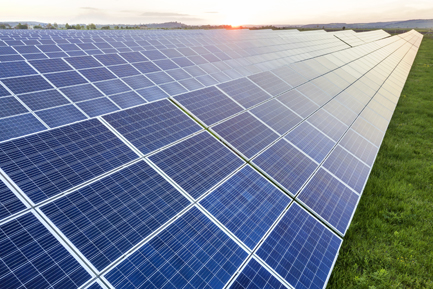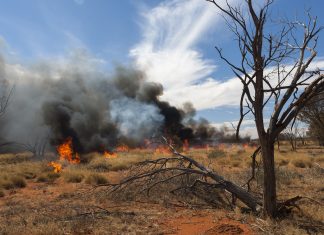By PHILIP HOPKINS
VICTORIA’S largest solar farm, including a massive battery, is set to be established at Hazelwood North on a 1100-hectare property between Morwell and Traralgon.
The federal Minister for Climate Change and Energy, Chris Bowen, announced the project at last week’s Gippsland New Energy Conference in Traralgon.
Mr Bowen said the large on-site battery would be able to store the same amount of energy that the solar farm will produce – enough to run 170,000 homes for four hours.
“That will be completed this decade. Not the next decade, not the decade after that, but this decade,” he told the conference, which was attended by about 800 people over two days.
“Construction will start in a couple of months and provide jobs for up to 500 people working across specialties including building, engineering, site maintenance and ‘agrisolar’, setting the site up to accommodate the sheep that will share the land.”
Mr Bowen said the sheep would be able to graze between the solar panels, and also be able to seek refuge from heat under the panels.
“Hazlewood Solar Farm is just one of the new clean, reliable renewable projects set for Victoria,” he said.
The solar farm, which received a planning permit on August 24, will have a capacity of 450 megawatts, a battery storage system of 450MW – about 1800 megawatt hours – a substation and associated infrastructure.
The project, a landowner-led proposal, is well connected to access points at the Princes Highway, Firmins Lane and Hazelwood Road.
The developer is a private Latrobe Valley business, Manthos Investments. The project is being managed by Robert Luxmoore Pty Ltd, which specialises in large-scale renewable energy assets, and Cogency Australia, a planning and engagement firm.
Access tracks are planned throughout the site for access by site vehicles and emergency services.
The battery itself will be on 10 hectares, and with the substation, be built centrally on site to connect to the grid.
The project is estimated to cost $651 million and will have 41 ongoing jobs (11 direct and 30 indirect).
The solar farm site will be bounded by native vegetation landscaping to visually screen the facility from surrounding land, with a 30-metre fire break between vegetation and the solar farm.
The battery is an essential element of the project as it allows for consistent electricity supply to the grid while the solar panels are not producing power. The developer says the capacity of the battery has been carefully considered to match the energy production capability of the solar panels.
Like the proposed substation, the battery will be sited well-away from neighbouring dwellings. The panels will sit about half-a-metre above ground at the maximum tilt. The developer says their installation will require minimal ground disturbance.
“The panels will not present a risk to the livestock, and farming operations will not affect the efficiency of the solar facilities,” the developer says.
“Allowing agricultural activities to continue on the site represents best practice within the renewable energy industry and maximises the utility of the site.”
Cogency Australia led the planning approval and stakeholder engagement for the proposal.
Cogency’s founder and director, Rebecca Wardle, told the Express that 18 months of community and stakeholder engagement took place during the early phases of planning and design work (before the planning application being lodged), with six months of continued engagement during the assessment.
“Consequently, only three objections were lodged against the proposal, with no appeals to VCAT once a decision was made,” she said.
“Engagement took place with neighbours, local community, GLaWAC, Latrobe City Council planning officers and councillors and Mayor, Unions, Latrobe Valley Authority, Gippsland Climate Change Network, Latrobe Regional Airport, Latrobe Regional Hospital and government Ministers.”
The project is within the Farming Zone and is also affected by various overlays for environmental significance, design and development, land subject to inundation, bushfire management, state resource and public acquisition.











